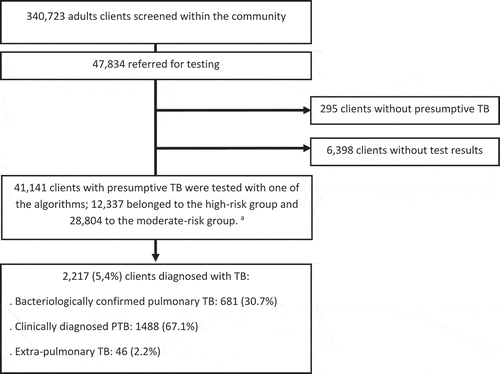Figures & data
Box 1. ACF preparation, procedures, and coordination.
Table 1. Algorithms used for active case finding in Cambodia, by target group, between 25 August 2014 and 31 March 2016.
Table 2. Characteristics of clients tested for TB after a positive symptom screen in the community, between 25 August 2014 and 31 March 2016, in Cambodia.
Figure 1. Flowchart showing uptake of diagnostic algorithms during TB active case finding, between 25 August 2014 and 31 March 2016, in Cambodia.

Table 3. Number needed to test (after a positive symptom screen) to diagnose one TB case, by algorithm, between 25 August 2014 and 31 March 2016, in Cambodia.
Table 4. Predictors of TB diagnosis, during active case finding in the community, between 25 August 2014 and 31 March 2016, in Cambodia.
Table 5. Same-day treatment initiation and diagnostic lost to follow-up during active case finding in the community, between 25 August 2014 and 31 March 2016, in Cambodia.
